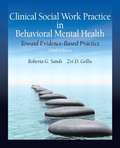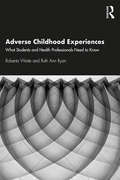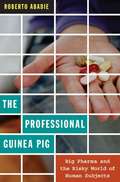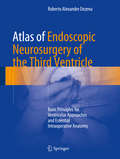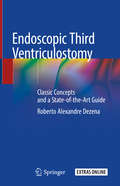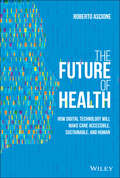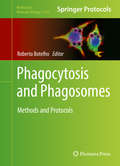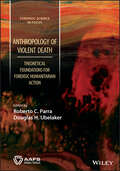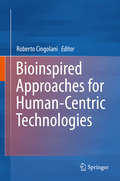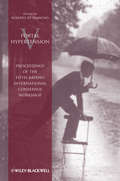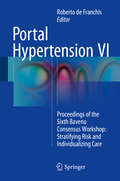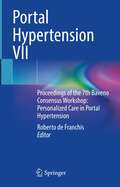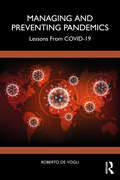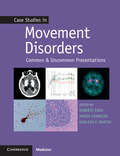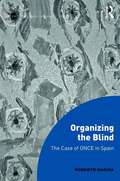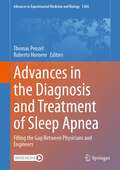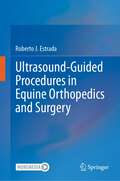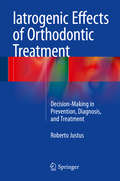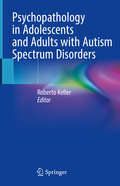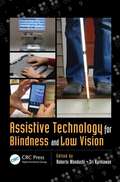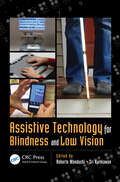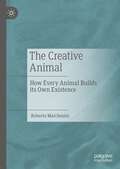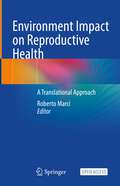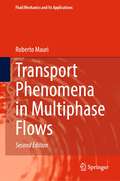- Table View
- List View
Clinical Social Work Practice in Behavioral Mental Health: Toward Evidence-Based Practice
by Roberta Sands Zvi Gellis<p>Clinical Social Work Practice in Behavioral Mental Health, 3/e uses evidence-based practice to provide in-depth coverage of clinical social work practice with clients in mental health settings. The authors show the social worker as the critical link between the client, the agency, the family, and the community. <p>Organized around 2 parts: PART I: A Framework for Practice (History, Culturally Competency, Legal and Ethical Issues, Biopsychosocial framework and assessment and Feminist Practice) and PART II: Intervention (Evidence Based Practice with clients with: Depression, Anxiety Disorders, Serious Mental Illness, Severe Mental Illness in Community Context and with their Families, and Co-occuring Substance Abuse and Serious Mental Illness) </p>
Adverse Childhood Experiences: What Students and Health Professionals Need to Know
by Roberta Waite Ruth Ann RyanThis guide provides healthcare students and professionals with a foundational background on adverse childhood experiences (ACEs) – traumatic early life experiences, which can have a profound impact on health in later life. ACEs can include being a victim of abuse, neglect or exposure to risk in the home or community. How healthcare students and professionals learn to recognize, react and respond to persons affected by trauma will lay the foundation for their relationships with patients. This book intentionally uses micro-to-macro lenses accompanied by a structural competency framework to elucidate health implications across the lifespan. It explores the nature of adversity and its effects on the physical, emotional, cognitive and social health of individuals, communities and society. The book, written by two experienced psychiatric nurses, will equip healthcare students and professionals with an understanding for critical change in practice and offer action steps designed to assist them with prevention and intervention approaches and steps to help build resilience. This book will be core reading for healthcare students within mental health, pediatric and primary care nursing courses. It will also be of interest to students and professionals in the social work, psychology and public health fields who are exploring resilience and trauma-informed practices
The Professional Guinea Pig: Big Pharma and the Risky World of Human Subjects
by Roberto AbadieThe Professional Guinea Pig documents the emergence of the professional research subject in Phase I clinical trials testing the safety of drugs in development. Until the mid-1970s Phase I trials were conducted on prisoners. After that practice was outlawed, the pharmaceutical industry needed a replacement population and began to aggressively recruit healthy, paid subjects, some of whom came to depend on the income, earning their living by continuously taking part in these trials. Drawing on ethnographic research among self-identified "professional guinea pigs" in Philadelphia, Roberto Abadie examines their experiences and views on the conduct of the trials and the risks they assume by participating. Some of the research subjects he met had taken part in more than eighty Phase I trials. While the professional guinea pigs tended to believe that most clinical trials pose only a moderate health risk, Abadie contends that the hazards presented by continuous participation, such as exposure to potentially dangerous drug interactions, are discounted or ignored by research subjects in need of money. The risks to professional guinea pigs are also disregarded by the pharmaceutical industry, which has become dependent on the routine participation of experienced research subjects. Arguing that financial incentives compromise the ethical imperative for informed consent to be freely given by clinical-trials subjects, Abadie confirms the need to reform policies regulating the participation of paid subjects in Phase I clinical trials.
Atlas of Endoscopic Neurosurgery of the Third Ventricle: Basic Principles for Ventricular Approaches and Essential Intraoperative Anatomy
by Roberto Alexandre DezenaThis book describes in practical terms the endoscopic neurosurgery of the third ventricle and surrounding structures, emphasizing aspects of intraoperative endoscopic anatomy and ventricular approaches for main diseases, complemented by CT / MRI images. It is divided in two parts: Part I describes the evolution of the description of the ventricular system and traditional ventricular anatomy, besides the endoscopic neurosurgery evolution and current concepts, with images and schematic drawings, while Part II presents a collection of intraoperative images of endoscopic procedures, focusing in anatomy and main pathologies, complemented by schemes of the surgical approaches and CT / MRI images. The Atlas of Endoscopic Neurosurgery of the Third Ventricle offers a revealing guide to the subject, addressing the needs of medical students, neuroscientists, neurologists and especially neurosurgeons.
Endoscopic Third Ventriculostomy: Classic Concepts and a State-of-the-Art Guide
by Roberto Alexandre DezenaEndoscopic third ventriculostomy is the most widely performed neuroendoscopic procedure around the world. Several scientific papers appear in the scientific literature every month, with an increasing number, given the great interest neuroendoscopy has aroused as well as controversies about certain aspects of endoscopic third ventriculostomy. With this reasoning, the goal of this book is to be a reference in the revision of classic concepts and scientifically proven aspects about the indications and techniques of endoscopic third ventriculostomy, as well as new neuroendoscopic tendencies. The book is structured in 2 parts and into 7 chapters. Part I – Classic Concepts – comprises the first 2 chapters, covering general aspects of neuroendoscopy such as historical notes, endoscopic anatomy and ventricular system physiology. Part II – State-of-the-Art – comprises chapters 3 to 7. From chapters 3 to 6 the book will discuss general principles of endoscopic ventricular technique and the applications of endoscopic third ventriculostomy in different age groups, and its association to choroid plexus coagulation. Chapter 7 deals with alternative ways of communicating the ventricular system with the cisterns of the subarachnoid space. All chapters are richly illustrated with high resolution images; there are links to online access to demonstrative surgical videos. Designed for neurosurgeons at every level, the book will be unique in the market, as there is no similar book in the current scientific literature that specifically discusses endoscopic third ventriculostomy in its broadest sense.
The Future of Health: How Digital Technology Will Make Care Accessible, Sustainable, and Human
by Roberto AscioneLearn how the future of medicine is being unlocked—one digital innovation at a time The Future of Health is an insightful and comprehensive overview of the past, present, and future of digital health. Accomplished health innovation leader Roberto Ascione delivers a practical exploration of how the latest digital technologies are transforming the practice of medicine and redefining health itself by making it more accessible, sustainable, and human. The book includes practical, real-world examples from the United States, Asia, and Europe of technology applications, companies, and start-up that have changed—or will change—our relationship with our health and the healthcare system. Readers will also find: How our health is becoming increasingly consumer and connected while technology is empowering patients in completely new ways and deeply transforming the doctor-patient relationship Discussions of how the training of medical professionals, particularly doctors, has changed—or needs to change—to meet the new digital reality Examinations of how new technologies will allow doctors to dodge many of the administrative and regulatory burdens they currently face each day Treatments of the ability of new technologies to unlock new, holistic ways of practicing medicine, with a focus on latest developments such as Digital Therapeutics and Virtual Reality Reflections on how digital health is fostering a shift “from cure to care” and will unleash a human-sized future for a more accessible, ubiquitous, and sustainable healthcare The Future of Health is required reading for medical practitioners and the managers of pharmaceutical companies. It will also earn a place in the libraries of medical device companies and healthcare entrepreneurs seeking an incisive treatment of the impact of digital technology on all aspects of healthcare. Also, the general public, interested in understanding how to take better control of their own health through digital technologies, will find this book insightful and easy to comprehend.
Phagocytosis and Phagosomes
by Roberto BotelhoThis volume details experimental approaches used to investigate phagocytosis and phagosome maturation. Chapters present methods and protocols on quantifying uptake and phagosome maturation using biophysical and biochemical approaches, proteomics, microscopy, and flow cytometry. Written in the highly successful Methods in Molecular Biology series format, chapters include introductions to their respective topics, lists of the necessary materials and reagents, step-by-step, readily reproducible laboratory protocols, and tips on troubleshooting and avoiding known pitfalls. Authoritative and cutting-edge, Phagocytosis and Phagosomes: Methods and Protocols aims to be an important resource for both experts in the field and for those investigators delving into phagocytosis and phagosome maturation for the first time.
Anthropology of Violent Death: Theoretical Foundations for Forensic Humanitarian Action (Forensic Science in Focus)
by Roberto C ParraThe first book to specifically focus on the theoretical foundations of humanitarian forensic science Anthropology of Violent Death: Theoretical Foundations for Forensic Humanitarian Action consolidates the concepts and theories that are central to securing the posthumous dignity of the deceased, respecting their memories, and addressing the needs of the surviving populations affected. Focusing on the social and cultural significance of the deceased, this much-needed volume develops a theoretical framework that extends the role of humanitarian workers and specifically the actions of forensic scientists beyond an exclusively legal and technical approach. Anthropology of Violent Death is designed to inspire and alerts the scientific community, authorities, and the justice systems to think and take actions to avoid the moral injury in society and cultures due to grave disrespect against humanity, its memories and reconciliation. Humanitarian forensic science faces the role of mediator between the deceased and those who are still alive to guarantee the respect and dignity of humanity. Contributions from renowned experts address post-mortem dignity, cultural perceptions of violent death and various mortuary sites, the forms and critical effects of the so-called forensic turn and humanitarian action, the treatment of violent death in post-conflict societies, respect for the dead under International Humanitarian Law (IHL) and Islamic law, the ethical management of the death of migrants, and much more. In an increasingly violent world, this volume, develops a theoretical component for death management in scenarios where humanitarian action is required Facilities better understanding between the social sciences, the forensic sciences, and justice systems in situations involving violent death Discusses the latest theories from leading scholars and practitioners to enhance the activities of forensic scientists and authorities who have the difficult responsibility of making decisions It provides a better understanding of the humanitarian and cultural dilemmas in the face of violent death episodes, and the unresolved needs of the dignity of the deceased during armed conflicts, disasters, migration crises, including everyday homicides Anthropology of Violent Death: Theoretical Foundations for Forensic Humanitarian Action is an indispensable resource for forensic scientists, humanitarian workers, human rights defenders, and government and non-governmental officials.
Bioinspired Approaches for Human-Centric Technologies
by Roberto CingolaniThe present book discusses topics related to research and development of materials and devices at nanoscale size and their respective application in medicine and biomedicine. The individual chapters give a detailed state of the art overview to the distinct topic. Apparently disconnected fields - life sciences, biomedicine, chemistry, physics, medicine and engineering - will be bridged with a highly interdisciplinary view onto each subject.
Portal Hypertension V: Proceedings of the Fifth Baveno International Consensus Workshop
by Roberto De FranchisEvery five years, hepatologists with an interest in portal hypertension (high blood pressure in the portal vein), gather in Baveno, Italy, for the Baveno International Consensus Workshop on Portal Hypertension, attending workshops and examining the latest in clinical data and research on this condition. This book documents the contents of the meeting so that practitioners who could not be present at the conference still have access to the proceedings.
Portal Hypertension VI
by Roberto De FranchisThis book will be an excellent tool for practitioners seeking an update on the latest developments in the diagnosis and management of cirrhosis and portal hypertension. Among the topics addressed are risk stratification, prognosis, screening and surveillance, impact of etiological and antifibrotic therapy, the gut microbiome and cirrhosis, prevention of decompensation/further decompensation, management of the acute bleeding episode, controversies in pediatrics, and vascular diseases of the liver in cirrhotic and noncirrhotic portal hypertension. The book is a compilation of lectures and important consensus statements from the Sixth Baveno International Consensus Workshop on Portal Hypertension, the most recent of a series of workshops held every 5 years for hepatologists with an interest in the field. Portal Hypertension VI will serve as a reference book for clinical and research fellows in Gastroenterology and Hepatology and should inspire new research projects in the areas identified as promising by the experts of the Baveno VI Faculty.
Portal Hypertension VII: Proceedings of the 7th Baveno Consensus Workshop: Personalized Care in Portal Hypertension
by Roberto De FranchisThis book, the seventh in a series of proceedings volumes that began in 1995, reviews the latest developments in the diagnosis and management of cirrhosis and portal hypertension. It addresses a broad range of topics, including: risk stratification, HVPG, non-invasive surrogates for cACLD, CSPH, varices, progression and regression of cirrhosis, impact of etiological therapy on cirrhosis, impact of non-etiological novel therapies on cirrhosis, prevention of first/further decompensation, acute variceal hemorrhage, and Vascular Liver Disorders in Cirrhosis (VALDIG).The book is a compilation of lectures and important consensus statements from the Seventh Baveno International Consensus Workshop on Portal Hypertension, the latest in a series of workshops held every five years for hepatologists with an interest in the field. Portal Hypertension VII offers a valuable reference guide for clinical and research fellows in Gastroenterology and Hepatology and will inspire new research projects in the promising areas identified by the experts of the Baveno VII Faculty.
Managing and Preventing Pandemics: Lessons From COVID-19
by Roberto De VogliUsing an evidence-based, critical, population health approach, this book provides a comprehensive analysis of the key errors and most effective interventions to contain the COVID-19 pandemic. It also examines the root determinants of pandemic risk on a global scale and addresses the policy changes to be implemented to prevent future health crises.Part One of the book discusses the lethal errors in the management of the COVID-19 pandemic, focusing particularly on those countries that failed to limit the death toll caused by the health crisis. These mistakes include lack of preparation, disinformation, medicalization, adoption of a “laissez-faire the virus” approach and inequity. Part Two analyzes the vital actions that enabled “virtuous” countries to effectively limit the most deadly effects of the pandemic: prevention, immunization and support.Part Three looks at what we should do to prevent the next pandemic. This part examines the proximal social and environmental causes of pandemic risk (e.g., deforestation, industrialized animal farming and climate change), as well as the “causes of the causes,” which include our model of global economic development and its philosophical and ideological underpinnings.
Case Studies in Movement Disorders: Common and Uncommon Presentations
by Roberto ErroDrawing on the expertise of an international team of authors, Case Studies in Movement Disorders is a compilation of illustrative cases, demonstrating a step-by-step approach to diagnosing and managing these complex conditions. An extensive collection of over sixty videos shows both common and uncommon presentations of a wide range of movement disorders, and the accompanying text guides readers systematically through the clinical history, examination and investigation findings, and diagnosis, and finally discusses the clinical issues raised. Both surgical and pharmacological management options are presented, helping readers understand some of the controversies involved in treatment. The cases are drawn from all of the major groups of movement disorders: ataxia, chorea, dystonia, myoclonus, parkinsonism, tics, and tremor. This will be invaluable for both neurologists in training and more experienced professionals seeking to develop their diagnostic skills, especially when faced with uncommon conditions or uncommon manifestations of common disorders.
Organizing the Blind: The Case of ONCE in Spain (Interdisciplinary Disability Studies)
by Roberto GarvíaThis book is a case study which narrates the history of the National Organization of the Spanish Blind (ONCE), established in 1937 during the Spanish Civil War. Contrary to other affluent countries where most blind people live on welfare benefits, the Spanish blind enjoy full employment. Furthermore, the average income of the Spanish blind is higher than that of the sighted. Why is this so? Why the blind, and not the deaf mute, or any other group of disabled people? This book shows that ONCE answers these questions.
Advances in the Diagnosis and Treatment of Sleep Apnea: Filling the Gap Between Physicians and Engineers (Advances in Experimental Medicine and Biology #1384)
by Thomas Penzel Roberto HorneroThe book focuses on biomedical innovations related to the diagnosis and treatment of sleep apnea. The latest diagnostic tools are described, including sleep laboratory equipment, wearables, and even smartphone apps. Innovative medical devices for treatment are also covered, such as CPAP, Auto-PAP, hypoglossal nerve stimulation, phrenic nerve stimulation, acoustic brain stimulation and electrical brain stimulation. This is an ideal book for biomedical engineers, pneumologists, neurologists, cardiologists, physiologists, ENT physicians, pediatrics, and epidemiologists who are interested in learning about the latest technologies in treating and diagnosing sleep apnea.
Ultrasound-Guided Procedures in Equine Orthopedics and Surgery
by Roberto J. EstradaThis book serves as a practical guide for equine veterinarians in orthopedics and surgery. It reviews and summarizes the current scientific evidence of the most commonly performed ultrasound-guided procedures for ultrasound-assisted surgery and injections.For the first time, different techniques are compiled and richly illustrated with pictures and videos to guide the practitioner step-by-step. An initial discussion about the general principles of ultrasound-guided procedures sets the bases for clinicians to understand the general technique and apply it to each approach. Additional chapters describe the most common ultrasound-guided injections in different anatomical structures as well as the surgical approaches that are aided or guided with ultrasound.All over the world ultrasound-guided procedures are performed daily in many different fields of equine practice. The main objective of using these approaches is to increase accuracy and minimize tissue trauma when performing diagnostic and therapeutic procedures. Equine orthopedics and surgery are among the major applications of these techniques.Learn about ultrasound-assisted techniques and be part of this trend! Maximize your capacity as a veterinarian, directly affecting the health of your patients. You can access the supplementary videos directly on your smartphone or tablet; simply download the Springer Nature More Media App for free and scan the links with the play button.
Iatrogenic Effects of Orthodontic Treatment
by Roberto JustusThis book is a well-illustrated guide to the iatrogenic effects of orthodontic treatment that provides practical information on orthodontic diagnosis, treatment planning, and post-treatment retention and highlights preventive measures to avoid complaints and lawsuits. It is divided into three parts, on white spot lesions, periodontal deterioration, and external apical root resorption (EARR). The reader will learn a wide variety of invaluable skills and strategies, such as how to minimize the risk of enamel decalcifications as a result of orthodontic treatment; how to deproteinize the enamel surface and bond brackets with hybrid glass ionomer cement; how to avoid lower incisor proclination and still achieve ideal long-term alignment; and how to apply strategies to minimize orthodontically induced EARR. Iatrogenic Effects of Orthodontic Treatment will be an excellent aid for both orthodontists and pediatric dentists.
Psychopathology in Adolescents and Adults with Autism Spectrum Disorders
by Roberto KellerThis book provides a comprehensive overview of the diagnosis, management and treatment of the psychiatric comorbidities encountered in adolescents and adults with Autism Spectrum Disorder (ASD). After discussing key issues in diagnosing ASD in adolescents and adults, the opening part of the book examines the genetics, neuroimaging and neuropsychology of ASD. Several chapters are then devoted to all of the psychiatric comorbidities such as psychosis, obsessive-compulsive disorder, depression, bipolar disorder, anxiety disorders, eating disorders etc. For each disorder, the clinical symptoms, biological basis, diagnostic criteria and treatment options are described in detail. In addition, a special chapter is devoted to people with intellectual disabilities. Thanks to its clear approach, Psychopathology in Adolescents and Adults with Autism Spectrum Disorders will be an invaluable resource for psychiatrists, psychologists and neuropsychiatrists, as well as allied mental health professionals, caring for these patients.
Assistive Technology For Blindness And Low Vision (Rehabilitation Science In Practice)
by Roberto Manduchi Sri KurniawanAssistive technology has made it feasible for individuals with a wide range of impairments to engage in many activities, such as education and employment, in ways not previously possible. The key factor is to create consumer-driven technologies that solve the problems by addressing the needs of persons with visual impairments. Assistive Technology for Blindness and Low Vision explores a broad range of technologies that are improving the lives of these individuals. Presenting the current state of the art, this book emphasizes what can be learned from past successful products, as well as what exciting new solutions the future holds. <P><P> Written by world-class leaders in their field, the chapters cover the physiological bases of vision loss and the fundamentals of orientation, mobility, and information access for blind and low vision individuals. They discuss technology for multiple applications (mobility, wayfinding, information access, education, work, entertainment), including both established technology and cutting-edge research. The book also examines computer and digital media access and the scientific basis for the theory and practice of sensory substitution. <P><P> This volume provides a holistic view of the elements to consider when designing assistive technology for persons with visual impairment, keeping in mind the need for a user-driven approach to successfully design products that are easy to use, well priced, and fill a specific need. Written for a broad audience, this book provides a comprehensive overview and in-depth descriptions of current technology for designers, engineers, practitioners, rehabilitation professionals, and all readers interested in the challenges and promises of creating successful assistive technology.
Assistive Technology for Blindness and Low Vision (Rehabilitation Science in Practice Series)
by Roberto Manduchi Sri KurniawanAssistive technology has made it feasible for individuals with a wide range of impairments to engage in many activities, such as education and employment, in ways not previously possible. The key factor is to create consumer-driven technologies that solve the problems by addressing the needs of persons with visual impairments. Assistive Technology for Blindness and Low Vision explores a broad range of technologies that are improving the lives of these individuals. Presenting the current state of the art, this book emphasizes what can be learned from past successful products, as well as what exciting new solutions the future holds.Written by world-class leaders in their field, the chapters cover the physiological bases of vision loss and the fundamentals of orientation, mobility, and information access for blind and low vision individuals. They discuss technology for multiple applications (mobility, wayfinding, information access, education, work, entertainment), including both established technology and cutting-edge research. The book also examines computer and digital media access and the scientific basis for the theory and practice of sensory substitution.This volume provides a holistic view of the elements to consider when designing assistive technology for persons with visual impairment, keeping in mind the need for a user-driven approach to successfully design products that are easy to use, well priced, and fill a specific need. Written for a broad audience, this book provides a comprehensive overview and in-depth descriptions of current technology for designers, engineers, practitioners, rehabilitation professionals, and all readers interested in the challenges and promises of creating successful assistive technology.
The Creative Animal: How Every Animal Builds its Own Existence
by Roberto MarchesiniThis book deals with the theme of creativity in the animal world, conceived as a basic function for adapting to specific situations and as a source of innovations and inventions. Creativity is a fundamental resource for the individual who always has a leading role in conduct. To explain creativity, the book focuses on the concept of animal subjectivity, providing a new explanatory model of behavior capable of overcoming the image of the animal moved by automatisms. This model does not use consciousness as a necessary condition, but is based: 1) on affective components, such as behavioral motives, and 2) cognitive, as tools used by the subject to carry out his purposes. Particular attention is paid to the learning processes showing the subjective character of the experience. One topic addressed is the role of creativity in the evolution of living beings: how an invention, by modifying the niche characteristics, is able to change the selective pressures and the trajectory of phylogeny. Roberto Marchesini explains that creativity is a factor that is anything but rare or exceptional in the animal world—it constitutes a fundamental quality for many aspects of animal life.
Environment Impact on Reproductive Health: A Translational Approach
by Roberto MarciThis open access book focuses on of the impact of endocrine disrupting chemicals (EDCs) on human reproduction. It comprehensively discusses the three most important topics in the field: the basic biology of EDCs; the effects of EDCs on human reproduction and human reproductive systems; and potential interventions and practical advice for dealing with the problems caused by EDCs.Presenting a translational approach to endocrine disrupting chemicals research, spanning both basic biology and clinical applications, the book provides a critical link between laboratory investigations and clinical practice. Written by international experts in the field, it is a valuable reference resource for gynaecologists, obstetricians, endocrinologists and experts in reproductive medicine, and a useful tool for anyone interested in the impact of the environment on human reproduction.
Transport Phenomena in Multiphase Flows (Fluid Mechanics and Its Applications #112)
by Roberto MauriThis textbook provides a thorough presentation of the phenomena related to the transport of mass (with and without electric charge), momentum and energy. It lays all the basic physical principles, and then for the more advanced readers, it offers an in-depth treatment with advanced mathematical derivations and ends with some useful applications of the models and equations in specific settings. The important idea behind the book is to unify all types of transport phenomena, describing them within a common framework in terms of cause and effect, respectively, represented by the driving force and the flux of the transported quantity. The approach and presentation are original in that the book starts with a general description of transport processes, providing the macroscopic balance relations of fluid dynamics and heat and mass transfer, before diving into the mathematical realm of continuum mechanics to derive the microscopic governing equations at the microscopic level. The book is a modular teaching tool and is used either for an introductory or for an advanced graduate course. The last six chapters are of interest to more advanced researchers who might be interested in applications in physics, mechanical engineering or biomedical engineering. In particular, this second edition of the book includes two chapters about electric migration, that is the transport of mass that takes place in a mixture under the action of electro-magnetic fields. Electric migration finds many applications in the modeling of energy storage devices, such as batteries and fuel cells. All chapters are complemented with solved exercises that are essential to complete the learning process.
The COVID-19 Textbook: Science, Medicine and Public Health
by William A. Haseltine Roberto PatarcaThe COVID-19 Textbook: Science, Medicine, and Public Health explores every facet of SARS-COV-2, giving the reader an understanding of what is needed to control the spread of the virus, prevent and manage its pathological effects, as well as mitigate the impact of future pandemics. Each chapter is authored by leading global experts in the field and includes topics such as molecular biology, epidemiology, pathogenesis, immunology, diagnosis, and the latest prevention and treatment approaches. Edited by renowned educator and medical researcher Dr. William A. Haseltine, physician-researcher, and chronic fatigue syndrome expert Dr. Roberto Patarca, it includes detailed references in every chapter, allowing easy access to comprehensive primary data. • Offers a timely, reliable overview authored and edited by leading global experts in the multifaceted areas covered on SARS-CoV-2 and the COVID-19 pandemic. • Serves as an authoritative and comprehensive text to be utilized by physicians, medical professionals, researchers, students, public health professionals, and policymakers.
